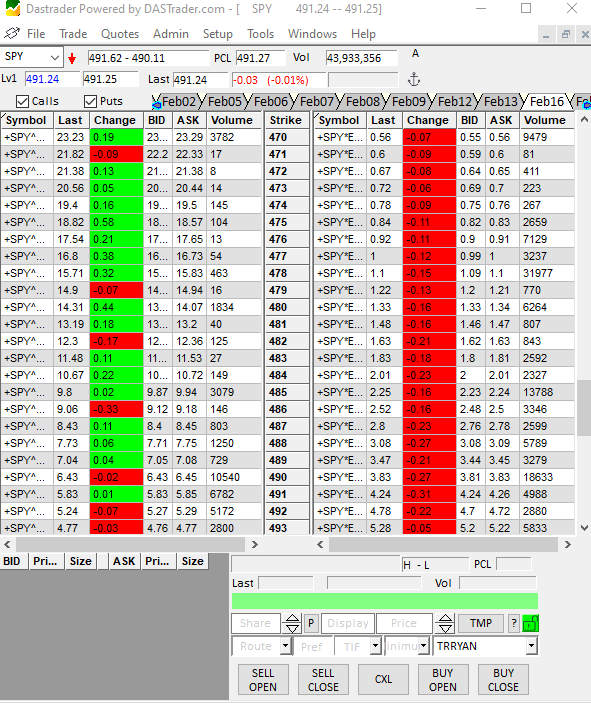Options are contracts that give the buyer the right, but not the obligation, to buy or sell an underlying asset at a specified price and time. Options trading can be a powerful way to generate income, hedge risk, and speculate on the future direction of the market. However, options trading also involves significant risks and complexities that require careful planning and execution. In this blog post, I will share some tips and strategies on how to profit with trading the options of a stock.
Tip #1: Understand the basics of options
Before you start trading options, you need to understand the basics of how they work and what they represent. Options are classified into two types: calls and puts. A call option gives the buyer the right to buy the underlying asset at a fixed price (called the strike price) before or on a certain date (called the expiration date). A put option gives the buyer the right to sell the underlying asset at the strike price before or on the expiration date. The seller (or writer) of an option is the one who receives a premium (or fee) from the buyer in exchange for taking on the obligation to deliver or buy the underlying asset if the option is exercised.
The value of an option depends on several factors, such as the current price of the underlying asset, the strike price, the time to expiration, the volatility of the underlying asset, and the interest rate. The value of an option can be divided into two components: intrinsic value and extrinsic value. Intrinsic value is the difference between the current price of the underlying asset and the strike price (for calls) or vice versa (for puts). Extrinsic value is the amount that reflects the probability of the option being in-the-money (ITM) at expiration. Extrinsic value is also affected by time decay, which is the decrease in value of an option as it approaches expiration.
Tip #2: Choose an appropriate strategy
Options trading offers a variety of strategies that can suit different objectives, risk profiles, and market conditions. Some of the common strategies are:
- Buying calls or puts: This is a simple and straightforward strategy that involves buying a call or a put option to profit from a bullish or bearish view on the underlying asset. The profit potential is unlimited, but the risk is limited to the premium paid for the option. However, this strategy also requires a large move in the underlying asset to overcome time decay and break even.
- Selling calls or puts: This is a strategy that involves selling a call or a put option to collect premium and profit from a neutral or opposite view on the underlying asset. The profit potential is limited to the premium received, but the risk is unlimited if the underlying asset moves against you. This strategy also requires margin and maintenance requirements from your broker.
- Spreads: This is a strategy that involves buying and selling options of the same type (calls or puts) with different strike prices and/or expiration dates. Spreads can be used to reduce risk, increase probability of success, and lower break even points. Some examples of spreads are vertical spreads, horizontal spreads, diagonal spreads, butterfly spreads, and condor spreads.
- Straddles and strangles: This is a strategy that involves buying or selling both a call and a put option with the same expiration date but different strike prices. Straddles and strangles can be used to profit from high volatility and large price movements in either direction. The profit potential is unlimited, but so is the risk. This strategy also requires a lot of capital and has high commissions and fees.
Tip #3: Manage your risk and reward
Options trading can be rewarding, but it can also be risky. Therefore, you need to manage your risk and reward carefully and follow some best practices, such as:
- Plan your trade and trade your plan: Before you enter an options trade, you should have a clear idea of your objective, entry point, exit point, stop-loss level, target level, position size, and risk-reward ratio. You should also stick to your plan and avoid emotional decisions.
- Use technical analysis and indicators: Technical analysis and indicators can help you identify trends, support and resistance levels, breakouts, reversals, momentum, volume, volatility, and other factors that can affect your options trade. You should use technical analysis and indicators as tools to complement your fundamental analysis and market sentiment.
- Diversify your portfolio: Diversification can help you reduce your exposure to specific risks and increase your chances of success. You should diversify your portfolio across different assets, sectors, industries, strategies, time frames, and expiration dates.
- Adjust your positions: Adjusting your positions can help you lock in profits, cut losses, hedge risk, or take advantage of new opportunities. You can adjust your positions by closing them partially or fully, rolling them forward or backward, adding or subtracting contracts, or changing the strike price or expiration date.
I hope you enjoyed this blog post and learned something new about options trading. Options trading can be a great way to profit with trading the options of a stock, but it also requires knowledge, skill, discipline, and risk management. If you want to learn more about options trading, you can check out some of the resources below:
- Options Trading Blog | Option Alpha https://optionalpha.com/blog: A blog about options trading, strategy research, and auto trading best practices.
- Top 7 blogs on Options Trading | 2022 https://blog.quantinsti.com/options-trading-top-blogs/: A list of some of the best options trading blogs of 2022.
- What Is Options Trading? A Complete Guide | The Motley Fool https://www.fool.com/the-ascent/buying-stocks/what-is-options-trading/: A comprehensive guide on options and options trading.


